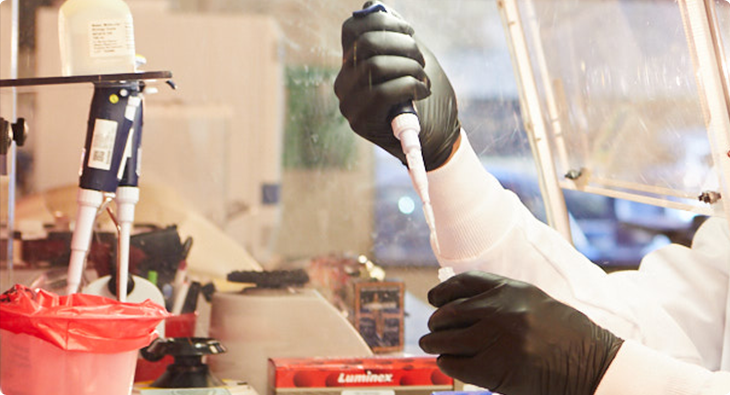For streamlined animal health testing with robust results, VRL chooses xMAP® Technology
Diagnostic testing isn’t just important for human health—it’s a key component of maintaining animal health as well. Few people are as familiar with this as the scientific experts at VRL, a diagnostic laboratory that has been serving animal health needs for more than 30 years.
VRL specializes in monitoring the health of animals used in research studies, though it also performs services for veterinarians in other areas of animal health. In its laboratory facilities, VRL scientists aim to detect viruses, bacteria, parasites, and other pathogens that could make animals sick.

Researchers at VRL use extensive diagnostic testing to ensure that animals—primarily rodents and nonhuman primates—are healthy prior to any research study. Their goal is to minimize variables that might confound study results. For example, a mouse that appears healthy, but covertly harbors a pathogen affecting its immune system could respond very differently than expected within an experiment focused on immune-related results.
Saving time and precious sample
Because VRL labs receive thousands of samples each day, their work requires a high-throughput approach with reliable results. Arlene Leon, director of operations and scientific affairs at VRL, is responsible for ensuring that all testing is performed properly, on time, and maintains standards of excellent scientific quality.
Under her leadership, VRL has implemented xMAP® Technology to deliver better, more accurate results within a shorter time frame. VRL has also become a Luminex Licensed Technologies Partner, receiving early access to new kits and products as well as enhanced support.
“Luminex takes us to the next level. We get more statistical data and more reliable results.”
The need for a multiplexed approach was obvious to Leon. Clients may ask for as many as 23 different tests on a single animal, and there is rarely enough sample available to perform these tests as individual ELISAs. Adopting xMAP’s bead-based multiplexing technology has allowed her team to overcome this challenge. “With Luminex, we use very little sample volume, and we can put all 23 tests in a single well,” Leon says. xMAP’s multiplexed approach also minimizes hands-on time for technicians, makes it possible to run more samples at once, and generates answers more quickly.
“Luminex takes us to the next level,” Leon says. “We get more statistical data and more reliable results.” The approach also allows her team to continue meeting their desired turnaround time of 24 to 48 hours, even as more samples come in.
Panel-based testing to xMAP multiplexing
Leon’s team is in the process of translating their panel-based testing approach to xMAP assays. xMAP’s multiplexed assays help optimize the team’s work, as each type of animal requires testing for different pathogens. Nonhuman primates, for example, are typically tested for five pathogens, while mice may need testing for more than two dozen pathogens. VRL aims to begin returning results for its first panel in the coming months, and later, transfer more of their clients to xMAP assays.
As xMAP Technology is rolled out in the VRL labs, Leon says it will also make it possible for VRL to offer new services, such as biomarker detection. “Now, the sky’s the limit in what our clients can ask us to do for them,” she says.
“As a high-throughput [veterinary] diagnostic lab with very short turnaround times, we have to make sure we have high quality and excellent client services,” Leon adds. “Working with Luminex helps us to provide that level of service.”
VRL is one of our exclusive partners that span a wide range of industries and specialties. See our website to view a full list of our partners and click here to learn more about partnering with Luminex.
